Best Cash ISAs 2025/26: Maximise Your Tax-Free Savings in the UK
With interest rates still strong in 2025/26 and savings limits refreshed for the new tax year, now is the perfect time to make the most of your tax-free allowance through a Cash ISA.
Cash ISAs allow UK residents to save up to £20,000 tax-free this financial year. Whether you’re looking for easy access or a fixed rate, the market is offering some of the best returns we’ve seen in years.
Here’s everything you need to know about Cash ISAs this year—and the top accounts to consider in 2025/26.
What Is a Cash ISA and Why Should You Use One?
A Cash ISA (Individual Savings Account) is a tax-free savings account available to UK residents aged 16 or over.
Benefits include:
-
No tax on interest earned
-
Up to £20,000 deposit allowance per tax year
-
Protection under the Financial Services Compensation Scheme (FSCS) for up to £85,000 per provider
-
Options to withdraw (Easy Access) or lock your funds (Fixed ISAs)
It’s ideal for people who want a safe, guaranteed return without worrying about the taxman.
Types of Cash ISAs You Can Open in 2025/26
| Type | Best For | Access | Typical Rate (2025) |
|---|---|---|---|
| Easy Access ISAs | Flexible withdrawals | Anytime | 4.5% – 5.5% |
| Fixed-Rate ISAs | Locking in a high rate for a set term | No early access | 5.0% – 5.8% |
| Notice ISAs | Slightly better rates with a short wait | 30–90 days notice | 5.2% – 5.6% |
| Flexible ISAs | Withdraw and repay without penalty | Anytime | Varies by provider |
⚠️ ISA Rule: You can only pay into one of each type of ISA each tax year unless using a flexible or split-ISA provider.
Top Easy Access Cash ISAs (2025/26)
If you want your savings to be available at any time without losing interest, an easy access ISA is a solid choice.
| Bank | Rate (AER) | Access | Min Deposit | Transfers In | Notes |
|---|---|---|---|---|---|
| Virgin Money | 5.25% | Instant | £1 | Yes | Branch/app/web access |
| Cynergy Bank | 5.15% | Same day | £1 | Yes | Online only, UK-based |
| Paragon Bank | 5.10% | Instant | £1,000 | Yes | FSCS-protected, 100% online |
| Zopa Smart ISA | 5.05% | Instant | £1 | Yes | Includes smart access features |
These are great for short-term goals or emergency funds where liquidity matters.
Best Fixed-Rate Cash ISAs (2025/26)
Fixed-rate ISAs let you lock in a high interest rate for a set time. Perfect if you don’t need the money right away and want a guaranteed return.
| Bank | Rate (AER) | Term | Min Deposit | Access |
|---|---|---|---|---|
| Close Brothers | 5.75% | 1 year | £10,000 | No early access |
| Shawbrook Bank | 5.60% | 1 year | £1,000 | Early access fee |
| UBL UK | 5.80% | 2 years | £2,000 | No withdrawals |
| United Trust Bank | 5.55% | 1 year | £1,000 | Online only |
Tip: Always check for early withdrawal penalties before committing to a fixed ISA.
Do ISAs Beat Regular Savings Accounts in 2025?
In many cases—not always. Some non-ISA savings accounts (like regular savers or easy access accounts) offer better headline rates.
So why use a Cash ISA?
-
If you’re a higher-rate taxpayer, ISAs shield your interest from tax
-
You can build long-term, tax-free savings
-
You protect yourself from future tax changes on savings income
If you’re already using your Personal Savings Allowance (£1,000 for basic-rate, £500 for higher-rate), a Cash ISA becomes essential.
Can You Switch or Transfer a Cash ISA?
Yes. You can transfer previous years’ ISAs without affecting your 2025/26 allowance. You can also switch your current year’s ISA to another provider if you transfer the full amount.
Make sure your new provider accepts transfers in, and always use their transfer service to avoid losing tax benefits.
Flexible Cash ISAs: What Are They?
Flexible ISAs allow you to withdraw money and put it back in during the same tax year without affecting your £20,000 limit.
For example:
-
You pay in £10,000
-
You withdraw £3,000
-
You can still pay in another £13,000 in the same tax year
Examples of providers offering flexible ISAs:
-
Nationwide FlexCash ISA
-
Virgin Money Easy Access ISA
-
Zopa Smart ISA
Not all ISAs are flexible—always check the small print.
Which UK Banks Offer the Most Reliable ISA Options?
🔵 Nationwide
-
Broad ISA range, including fixed and easy access
-
Strong customer service ratings
-
FSCS-protected
🔴 Virgin Money
-
Consistently top easy access ISA rates
-
Branch, web, and mobile app access
-
Accepts transfers in
⚫ Barclays
-
Fixed ISAs with competitive rates
-
Linked to Blue Rewards program for added benefits
🔷 Zopa
-
App-based, smart saving features
-
ISA ‘pots’ with variable notice periods
-
Ideal for tech-savvy savers
🔶 Shawbrook Bank
-
Best fixed rate ISAs for larger savers
-
Online only but highly rated by existing customers
Quick Tips for Getting the Best ISA Deal in 2025/26
-
Check for transfers in – if you have old ISAs, move them into higher-paying ones
-
Avoid dormant ISAs – many banks reduce rates after 12 months
-
Watch your allowance – you can only pay into one cash ISA per tax year
-
Use comparison tools – check live rates on sites like Moneyfacts
-
Review annually – set a calendar reminder to reassess each April
Final Thoughts: Who Should Open a Cash ISA in 2025/26?
You should consider a Cash ISA if:
-
You’re saving more than your Personal Savings Allowance
-
You want to build tax-free wealth long term
-
You’re looking for a safe, regulated savings option
-
You want flexibility or fixed certainty, depending on the ISA type
With interest rates at their best in over a decade, 2025/26 is a golden window for savers to lock in strong, tax-free returns.
 Swan SD6060N 1.5 litre Stainless Steel Fryer with Viewing Window, Non-Stick Coating for Easy Cleaning and Adjustable Thermostat with Indicator Light, Detachable Basket Handle, 900W, Silver
Swan SD6060N 1.5 litre Stainless Steel Fryer with Viewing Window, Non-Stick Coating for Easy Cleaning and Adjustable Thermostat with Indicator Light, Detachable Basket Handle, 900W, Silver 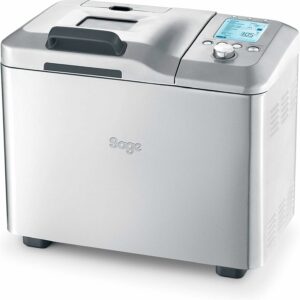 Sage - The Custom Loaf - Bread Maker, Brushed Stainless Steel
Sage - The Custom Loaf - Bread Maker, Brushed Stainless Steel 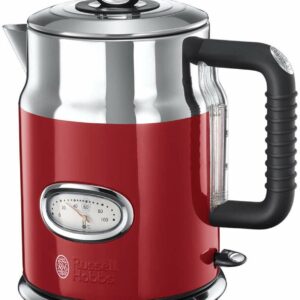 Russell Hobbs Kettle, retro red, 1.7 l, 2400 W, quick cooking function, water temperature display in retro design, filling level marking, optimised pouring spout, vintage 21670-70
Russell Hobbs Kettle, retro red, 1.7 l, 2400 W, quick cooking function, water temperature display in retro design, filling level marking, optimised pouring spout, vintage 21670-70  Sensio Home Personal Blender Smoothie Maker - BPA Free 1L Jar & 600ml Portable Sports Bottle, Electric Blender for Fruit, Vegetables, Protein Shakes, Crush Ice & Frozen Fruit, 2 Speed + Pulse 350W
Sensio Home Personal Blender Smoothie Maker - BPA Free 1L Jar & 600ml Portable Sports Bottle, Electric Blender for Fruit, Vegetables, Protein Shakes, Crush Ice & Frozen Fruit, 2 Speed + Pulse 350W 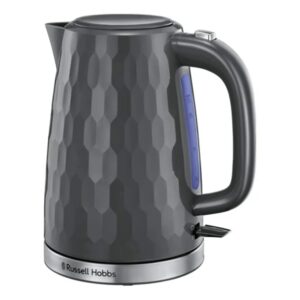 Russell Hobbs Honeycomb Electric 1.7L Cordless Kettle (Fast Boil 3KW, Grey premium plastic, matt & high gloss finish, Removable washable anti-scale filter, Push button lid, Perfect pour spout) 26053
Russell Hobbs Honeycomb Electric 1.7L Cordless Kettle (Fast Boil 3KW, Grey premium plastic, matt & high gloss finish, Removable washable anti-scale filter, Push button lid, Perfect pour spout) 26053  Rolling Kitchen Island Cart with Solid Wood Countertop Spice Rack and Wheels Portable Kitchen Cart (1 Piece)
Rolling Kitchen Island Cart with Solid Wood Countertop Spice Rack and Wheels Portable Kitchen Cart (1 Piece)  150FT Expandable Flexible Garden Hose with 7 Setting Professional Water Spray Nozzle
150FT Expandable Flexible Garden Hose with 7 Setting Professional Water Spray Nozzle  Swan SK14610FUS Nordic Cordless Jug Kettle with Fast Boil Technology, Overheat Protection, Soft Touch Handle, 1.7L, 3KW, Fuchsia Rose, Fusia
Swan SK14610FUS Nordic Cordless Jug Kettle with Fast Boil Technology, Overheat Protection, Soft Touch Handle, 1.7L, 3KW, Fuchsia Rose, Fusia 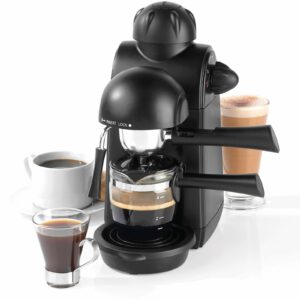 Salter EK3131 Espressimo Coffee Machine – 4-Shot Espresso Maker, Milk Frothing Wand, Includes 240 ml Glass Carafe, Barista Style Latte And Cappuccino, 5-Bar Pressure, Stainless Steel Filter, 870W
Salter EK3131 Espressimo Coffee Machine – 4-Shot Espresso Maker, Milk Frothing Wand, Includes 240 ml Glass Carafe, Barista Style Latte And Cappuccino, 5-Bar Pressure, Stainless Steel Filter, 870W 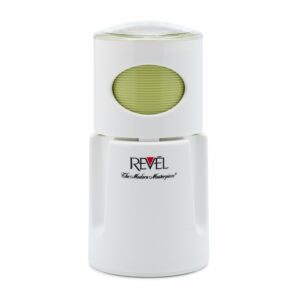 Revel CCM104 Wet and Dry Grinder, Plastic, White/Green
Revel CCM104 Wet and Dry Grinder, Plastic, White/Green 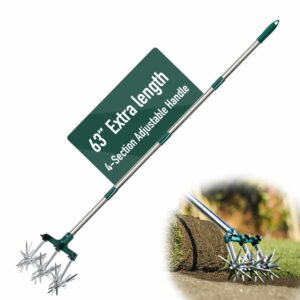 Rotary Cultivator Set, 25"-63" Adjustable Gardening Rotary Tiller and Hand-Held Garden Cultivator Tool with Steel Detachable Tines, Reseeding Grass or Soil Mixing
Rotary Cultivator Set, 25"-63" Adjustable Gardening Rotary Tiller and Hand-Held Garden Cultivator Tool with Steel Detachable Tines, Reseeding Grass or Soil Mixing 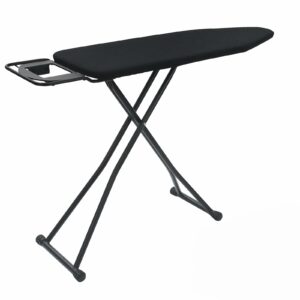 Rainberg 122 x 38cm Folding Ironing Board with Jumbo Iron Rest, Adjustable Height Up To 93cm, Foldable & Collapsible Ironing Table (Black)
Rainberg 122 x 38cm Folding Ironing Board with Jumbo Iron Rest, Adjustable Height Up To 93cm, Foldable & Collapsible Ironing Table (Black)